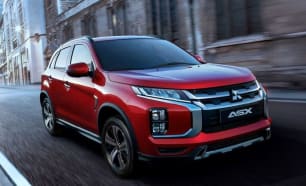This was my second time in a UX 200 within the last 12 months, but this time the loan period extended to around six weeks, covering the time much of the globe was in lockdown in response to the coronavirus.
So essential trips around town were the only ones being taken. But more time behind the F Sport’s wheel highlighted some of this UX 200’s dynamic strengths, particularly aspects of the continuously variable transmission (CVT).
This Toyota designed CVT has the advantage of a conventional first gear to give the UX some extra urgency from step-off. And when you’re predominantly in stop-start traffic (although there wasn’t too much of it), that’s a big help.
Like all CVTs, in set-and-forget Drive mode, this unit aims to keep the engine in its operating sweet spot, constantly balancing performance and economy goals; the downside being a droning engine noise. For those old enough to remember manual gearboxes it feels like a constantly slipping clutch.
But slip into ‘Manual’ and the CVT is able to mimic ratio points, and using the wheel-mounted paddles to shift between them lifts driver engagement massively, even in the compacted urban context.
In terms of outright performance, a kerb weight nudging 2.0 tonnes and a peak torque number (205Nm) that doesn’t arrive until a lofty 4800rpm goes a long way towards telling the UX 200 F Sport acceleration story. Lexus claims 0-100km/h in a reasonably brisk 9.2sec.
The UX is underpinned by the ‘Lexus Global Architecture – C’ platform (a Lexus name for Toyota’s TNGA chassis architecture) and suspension is by struts at the front and trailing wishbones at the rear, with the F Sport featuring adaptive variable suspension and a rear performance damper, the latter designed to improve chassis rigidity and minimise vibrations.
Overall ride comfort is really nice, although the standard 18-inch alloy rims are shod with 225/50 Dunlop SP Sport Maxx run-flat tyres and they’re relatively noisy, with an accompanying tendency to follow irregularities in the road surface.
Dial up the Sportier drive settings and everything tightens up appreciably, so if you’re that way inclined, the sport part of the F Sport’s personality is there to be explored.
The electrically assisted steering delivers decent accuracy and road feel, With some momentum up, the UX 200 F Sport feels balanced and predictable, putting it’s power down nicely, if you decide to break away for a brisk B-road run.
Braking is by ventilated discs at the front (305mm) with solid rotors at the rear (281mm), and stopping power is reassuringly firm.
As mentioned earlier, a tight 10.4m turning circle makes parking easy, supported by a high-quality reversing camera and proximity sensors front and rear.
Under the heading of general observations, the driver’s seating position is great - comfy and secure, a one-touch up and down function on all windows is a nice… touch, and the configurable instrument cluster (which includes the central dial physically sliding into different positions) is functional and fun.

